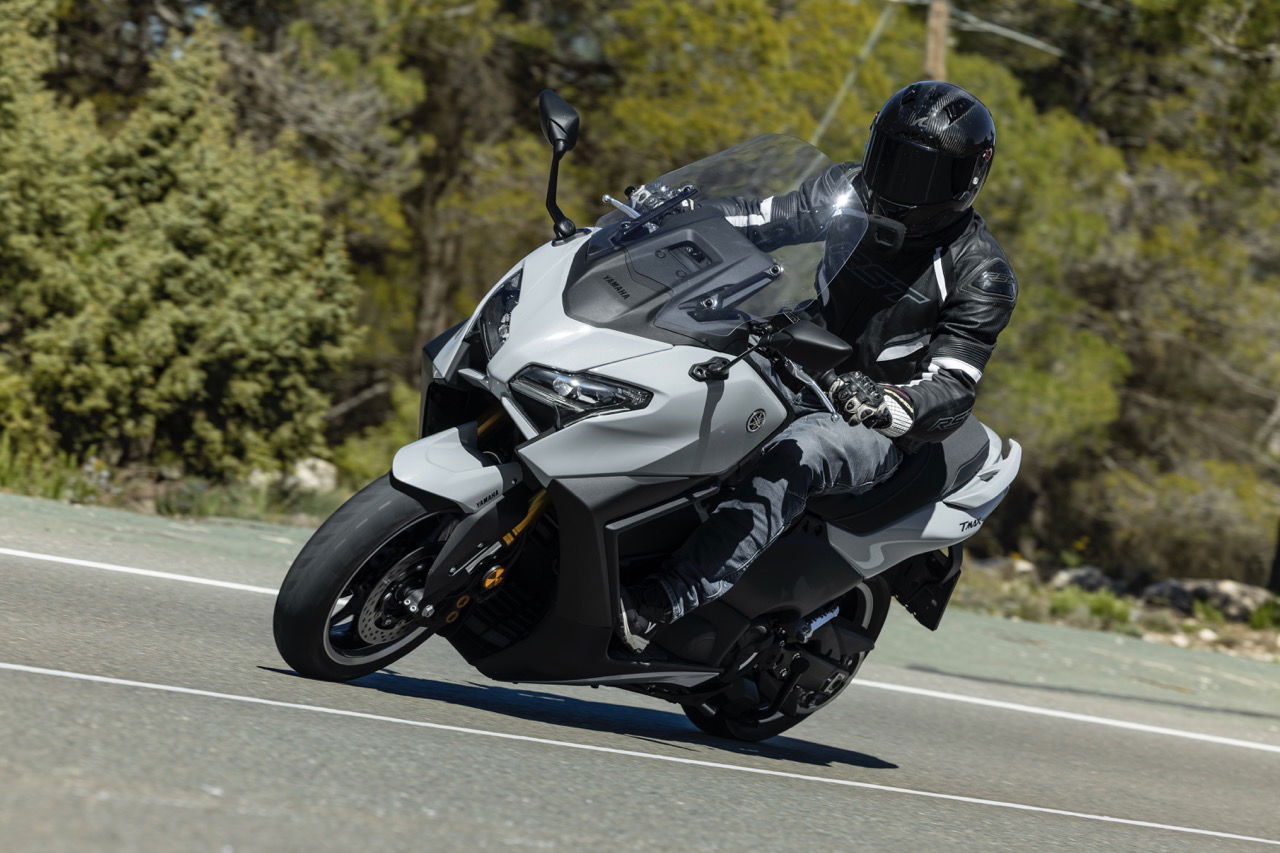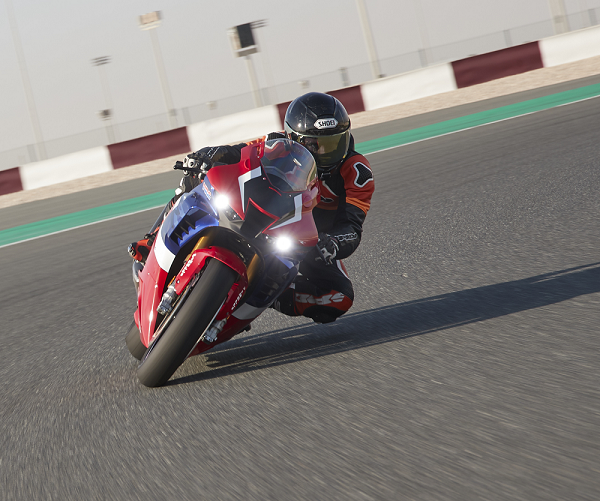Is This the Sporty Ducati Road Riders Really Want?
With its new 890cc engine and road-oriented ergonomics, is the new Streetfighter V2 the sporty road bike you actually want?

- Excellent low-end torque and high-quality Öhlins suspension
- Navigation buttons on the TFT display are reported to be fiddly
Last year, Ducati revealed its latest V2 engine platform, which saw power shrink to around 120bhp and the weight drop, with the new powerplant shedding around 10kg compared to the outgoing Superquadro engine.
We’ve already tested the sports bike (you can read our 2025 Ducati Panigale V2 review here), but how does the new engine feel in the more upright and road-oriented Streetfighter family?
For this press launch, Isle of Man TT presenter, journalist and trackday junkie, Grace Webb took over the testing, while Toad was off on a double-header of launches on the other side of the Iberian Peninsula.
What’s new with the 2025 Ducati Streetfighter V2 S
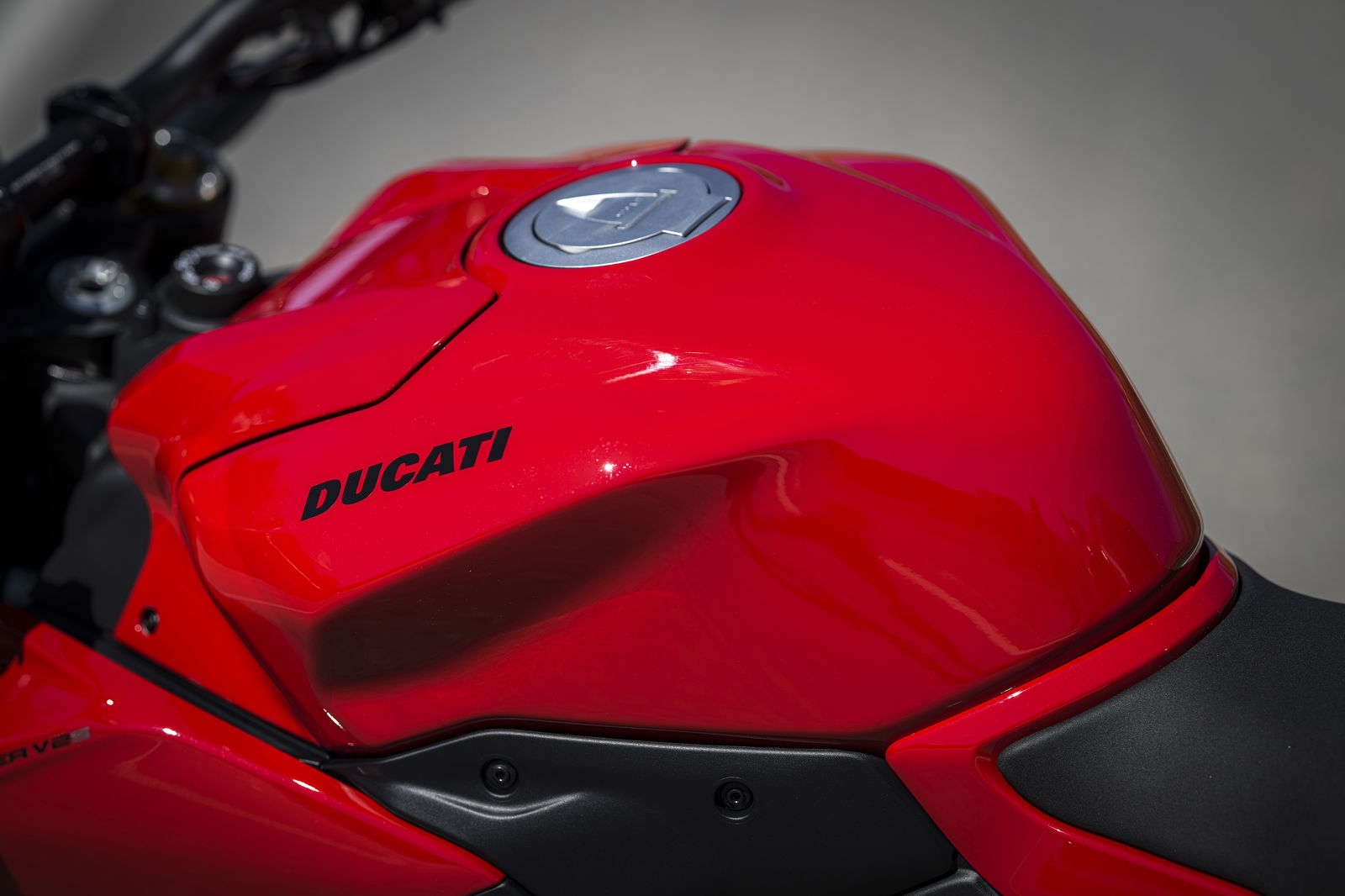
If you read up on this new 890cc V-twin (or L-twin in Ducati speak), you’ll know it’s a good chunk less powerful than the Superquadro engine it replaces. And so, the power output has plunged from a spicy 148bhp to a more modest but still potent 118bhp. The drop in torque, meanwhile, isn’t quite as big, going from 77lb ft to 69lb ft.
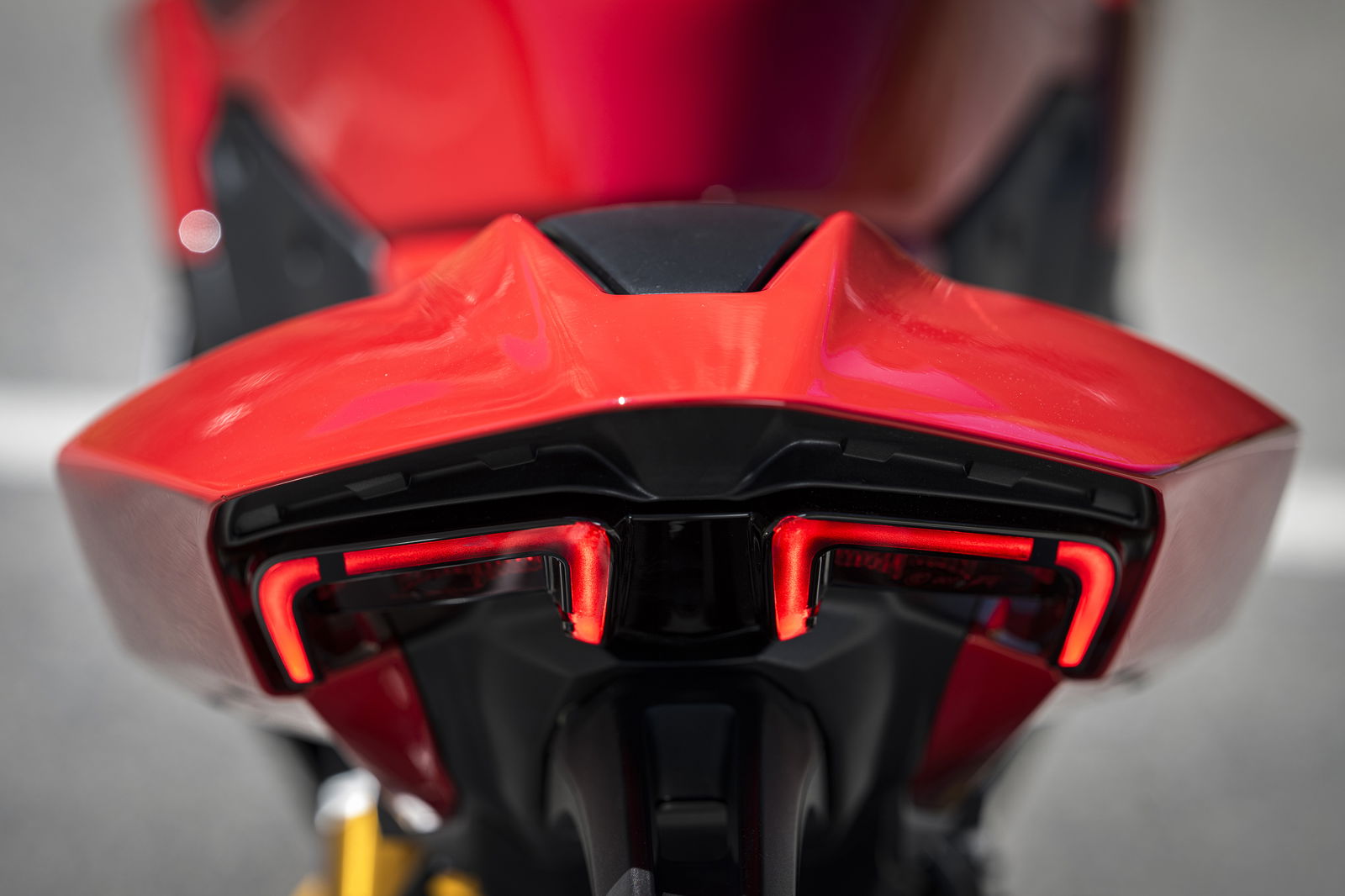
Handily for road riding, a good slice of the torque is available from low in the rev range, so the new twin should still feel plenty gutsy enough on the King's highway. The engine is also 9.4kg lighter than the Superquadro, contributing to an overall weight reduction of 17.5kg, in the case of the Streetfighter V2.
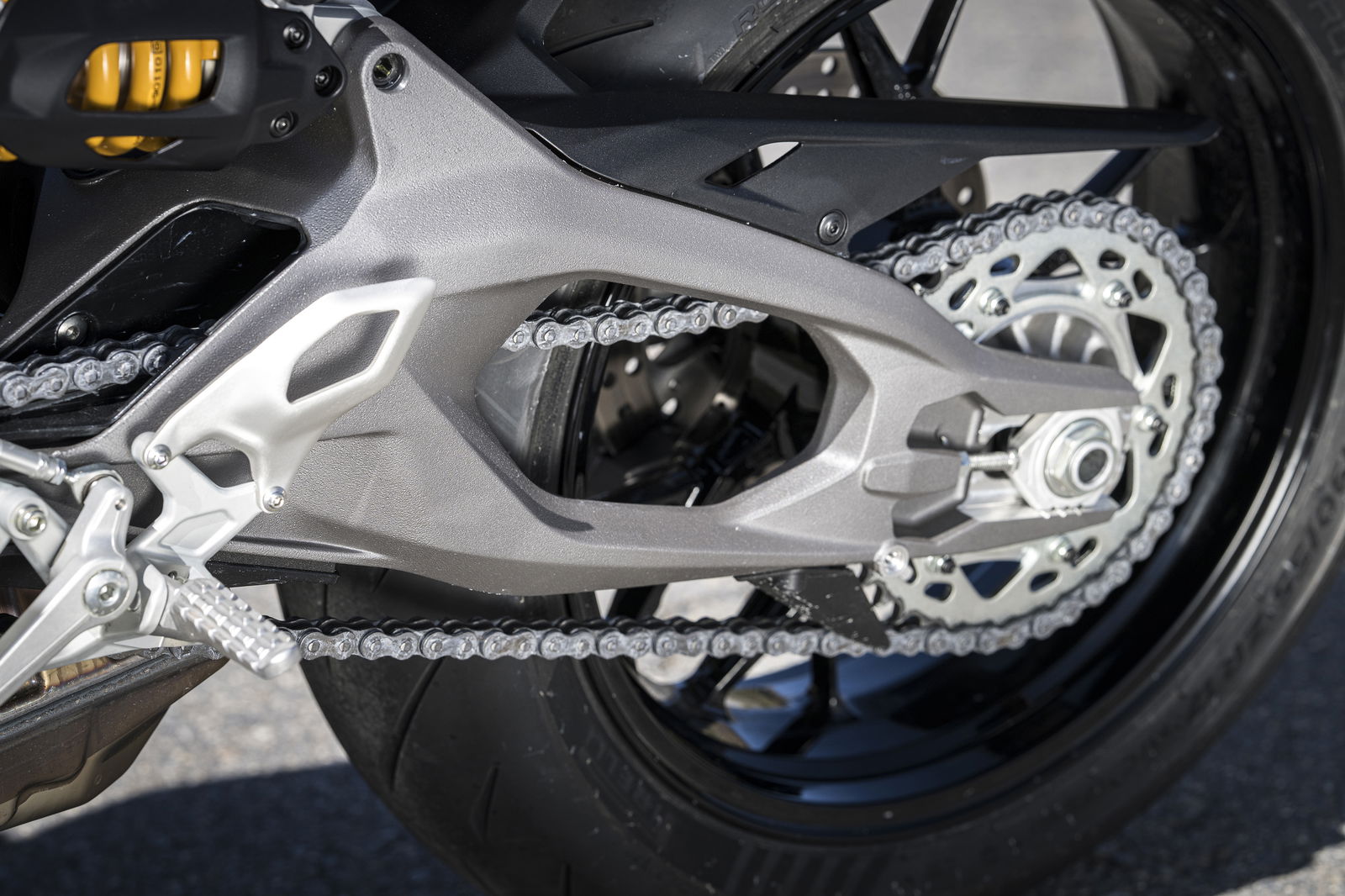
Joining the engine, we have an all-new frame, chassis and electronics package, and while much of it looks to be the same as the baby Panigale, some important revisions have been made. Like the Panigale, the Streetfighter loses the single-sided swingarm of old and instead uses a traditional item albeit in exotic hollow-cast form. The ‘frame’ of the bike is a familiar front frame (monocoque) item and bolted to the S are an Ohlins NIX fork and Ohlins rear shock - the base SF V2 gains a Marzocchi fork and KYB shock. The braking system is supplied by (you guessed it!) Brembo, with M50 monobloc callipers doing the work at the front on both machines.
As you’d expect, the electronics are as trick as it gets at this capacity, with full IMU control and all the track-oriented systems including wheelie control, traction control, slide control and engine brake control.
Price, colours and availability
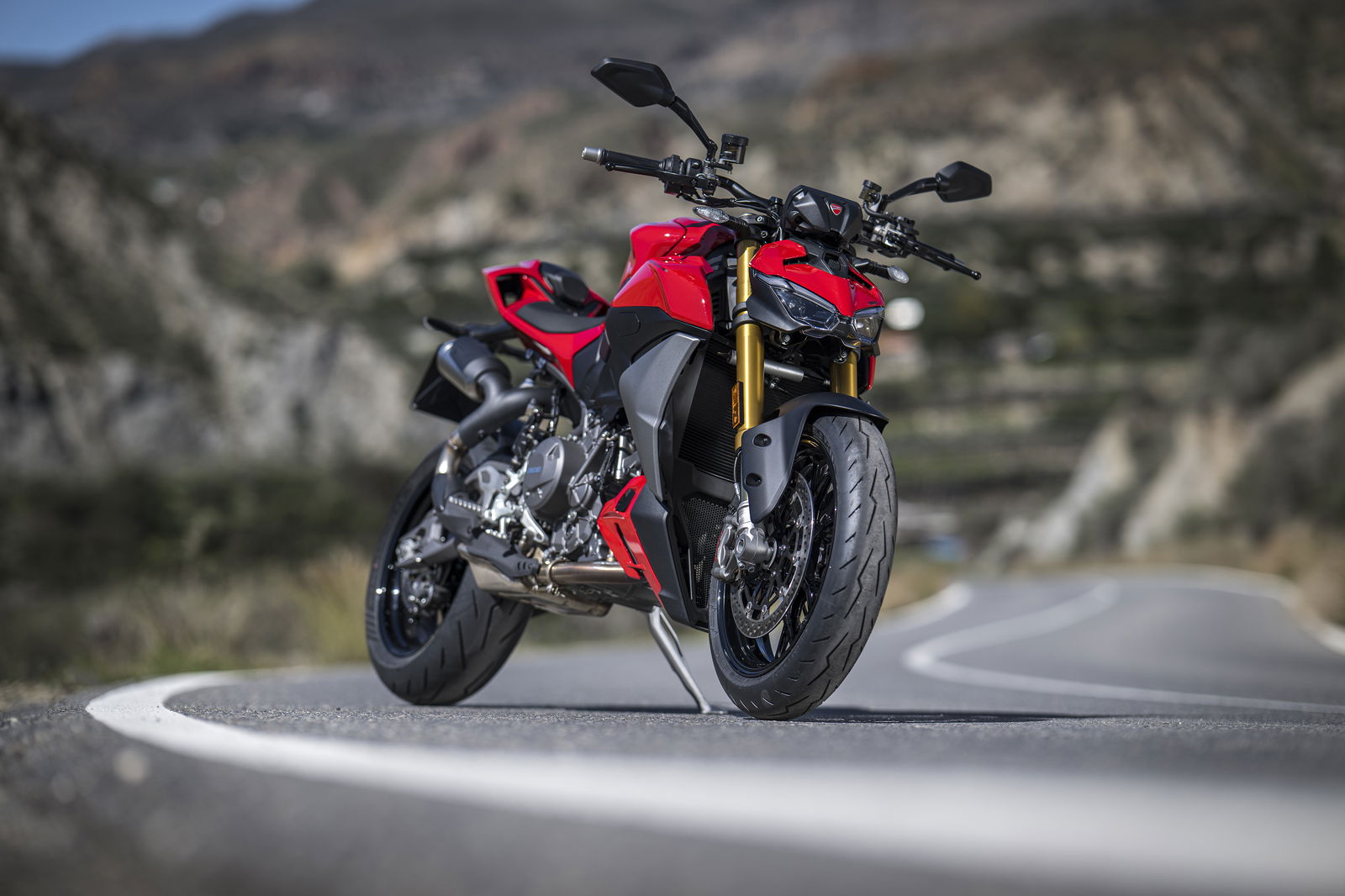
The new Streetfighter V2 S will be landing in dealers priced at £16,995 OTR (the outgoing Streetfighter V2 was around £16,395). The slightly lower spec base model Streetfighter V2 is priced at £14,995 OTR. The colour pallet for 2025 isn’t the most adventurous, as you can have the new bikes in any colour you want as long as it’s red.
What’s it like to ride
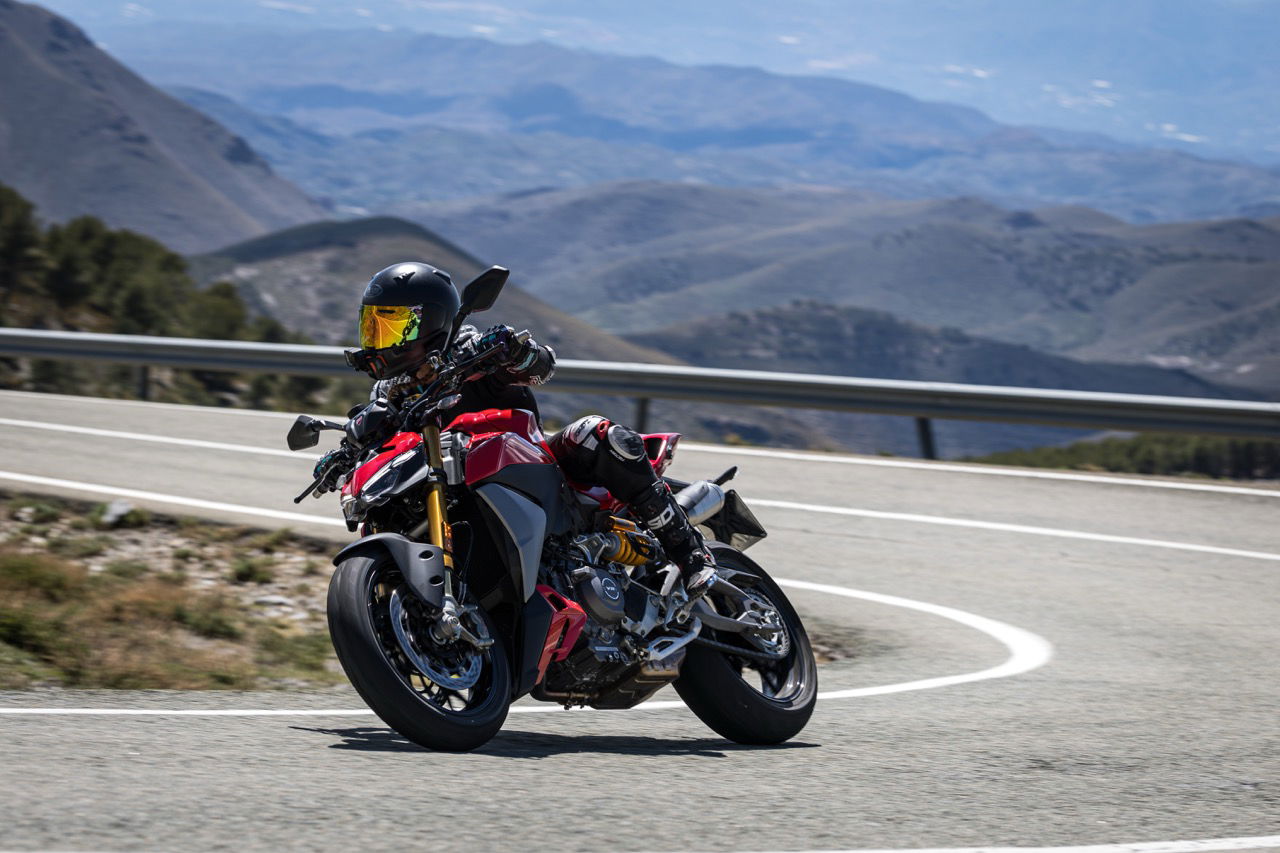
Having sampled Ducati’s V2 engine in the Panigale on track earlier in the year, I was looking forward to trying it again but in its more road-focused form. And what a road ride to take it on. Our group headed out at 9am from the coast of Almeria in Spain and covered arond 120 miles of Spanish mountain roads with a few miles of motorway thrown in for good measure. It was a great mix of roads to test out this new 890cc V-twin, especially as we were greeted with sapphire-blue skies from the moment we left, with the sun continuing to shine throughout our six-hour ride.
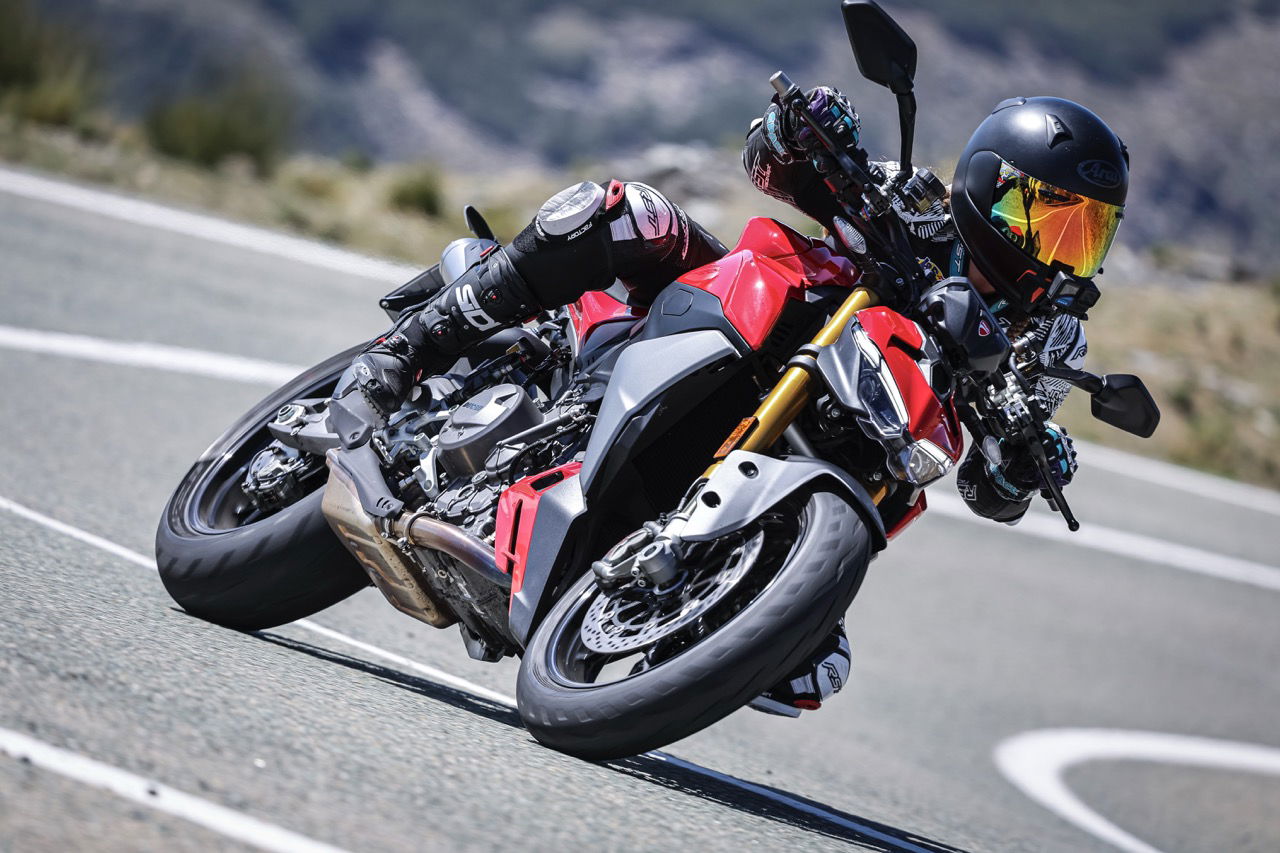
The first point I’ll make is that this was an absolute breeze to ride all day. The Streetfighter V2 ergonomics mean that compared to the Panigale V2, it has more rake angle (24.1 vs 23.6 degrees), a longer swingarm (+28mm) and a more upright riding position. That all adds up to a much more comfortable riding position, especially for my wrists and legs. From bobbing along on the dual carriageway to weaving around the mountain hairpins, the naked bike easily (and understandably) wins over the sport bike on the comfort front, and I had no problem in an all-day ride on this thing. Adding to the enjoyment is that new V2 engine, which will keep you entertained from the first twist of the wrist to the last cackle of the exhaust.
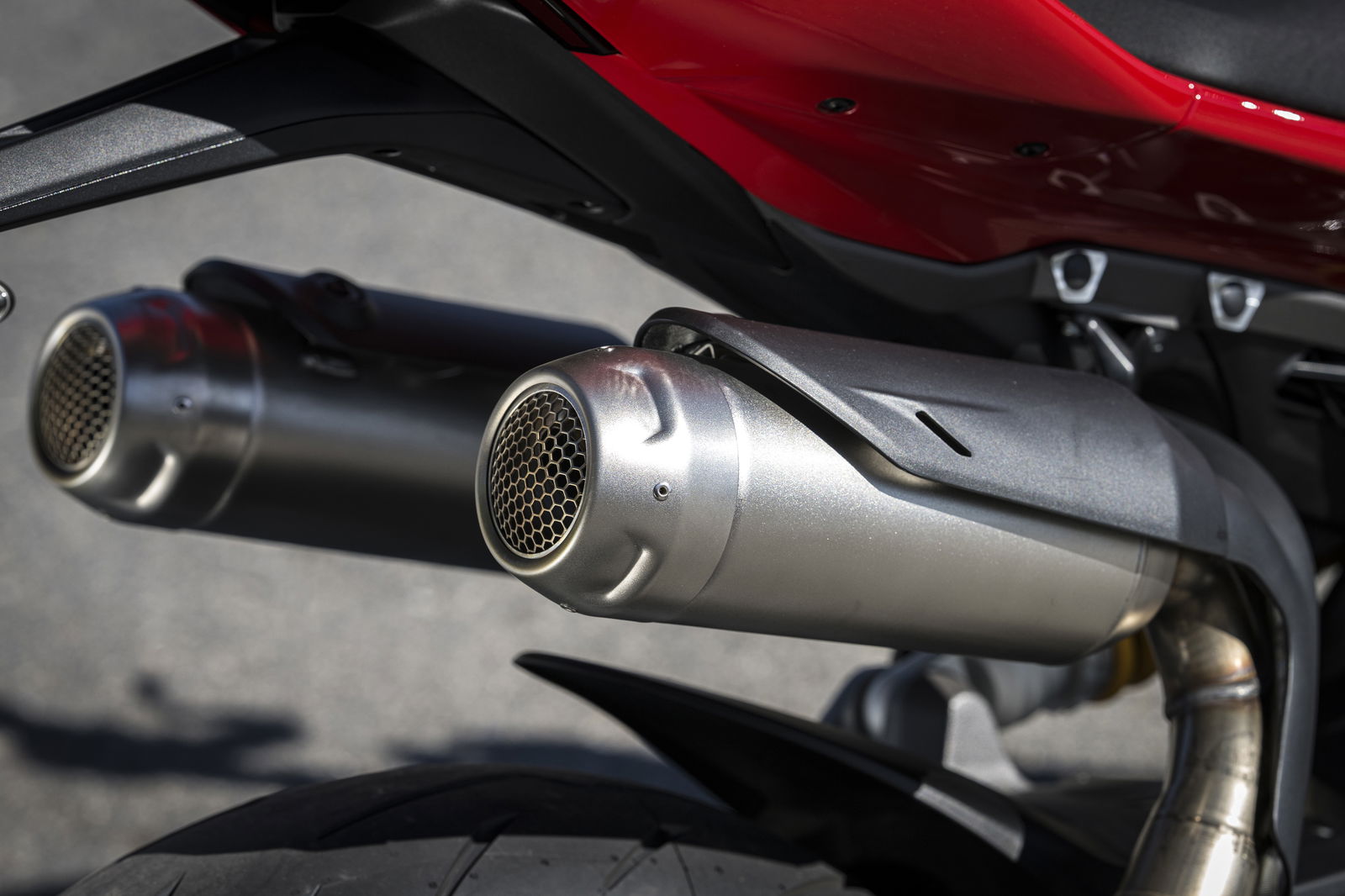
The new V2 engine produces a claimed 118bhp at 10,750rpm, with a maximum torque figure of 69lb ft arriving at 8,250rpm. What’s really impressive about the new model, and handy to have on the road, is that 80 per cent of the torque is available at just 4,000 rpm, meaning from down low in the revs, I’ve always got at least 55lb ft of twist on offer.
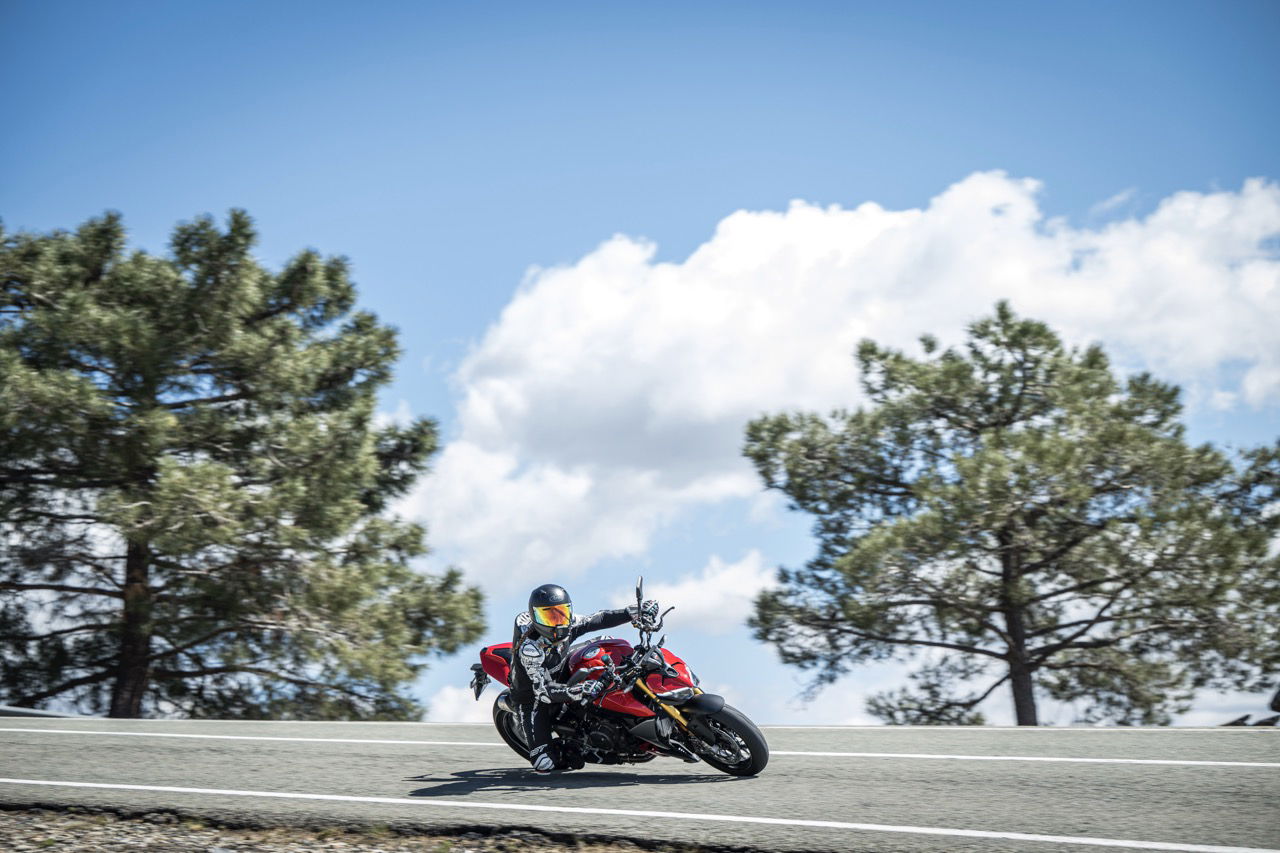
Thanks to the bike’s pithy weight (175kg weight - wet with no fuel), you can really feel it as this bike is just thrilling to ride, with sharp, agile handling and fast direction changes. When it was first announced that there would be a drop in power to this new engine, the uproar spread quicker than a Marquez qualifying lap, but actually when you ride it, you find that 118bhp is plenty to have fun with, especially on a naked bike and out on the public road. Paired with that low down torque and super-premium suspension, a lightweight naked bike is a formula that makes for a hair-raising ride.
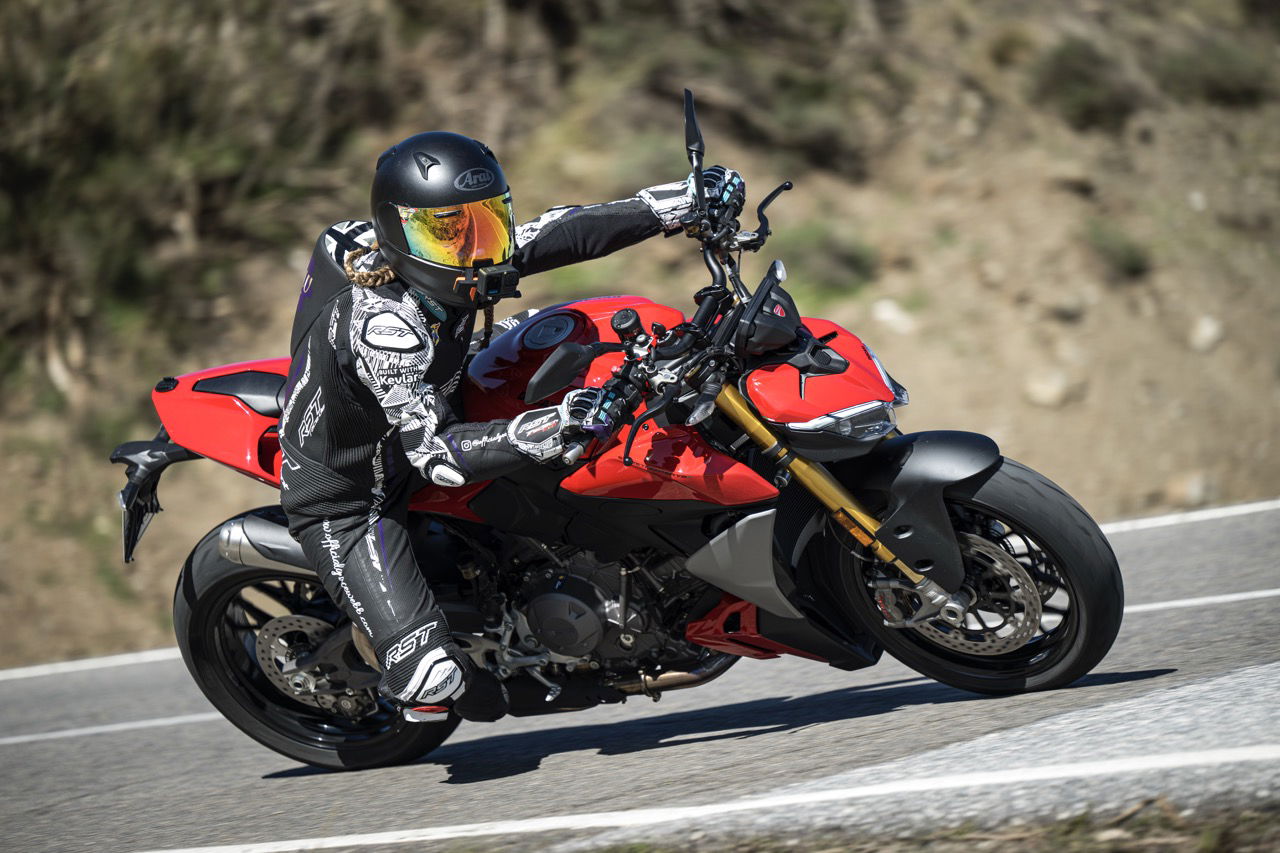
After the first dual-carriageway stint, it didn’t take long before the coiled mountain roads lay ahead, and the proper test of the Streetfighter could begin. A handful of throttle gives an incredible noise for a start, but it’s just pure fun to work the engine when you get such an accurate response from the throttle.
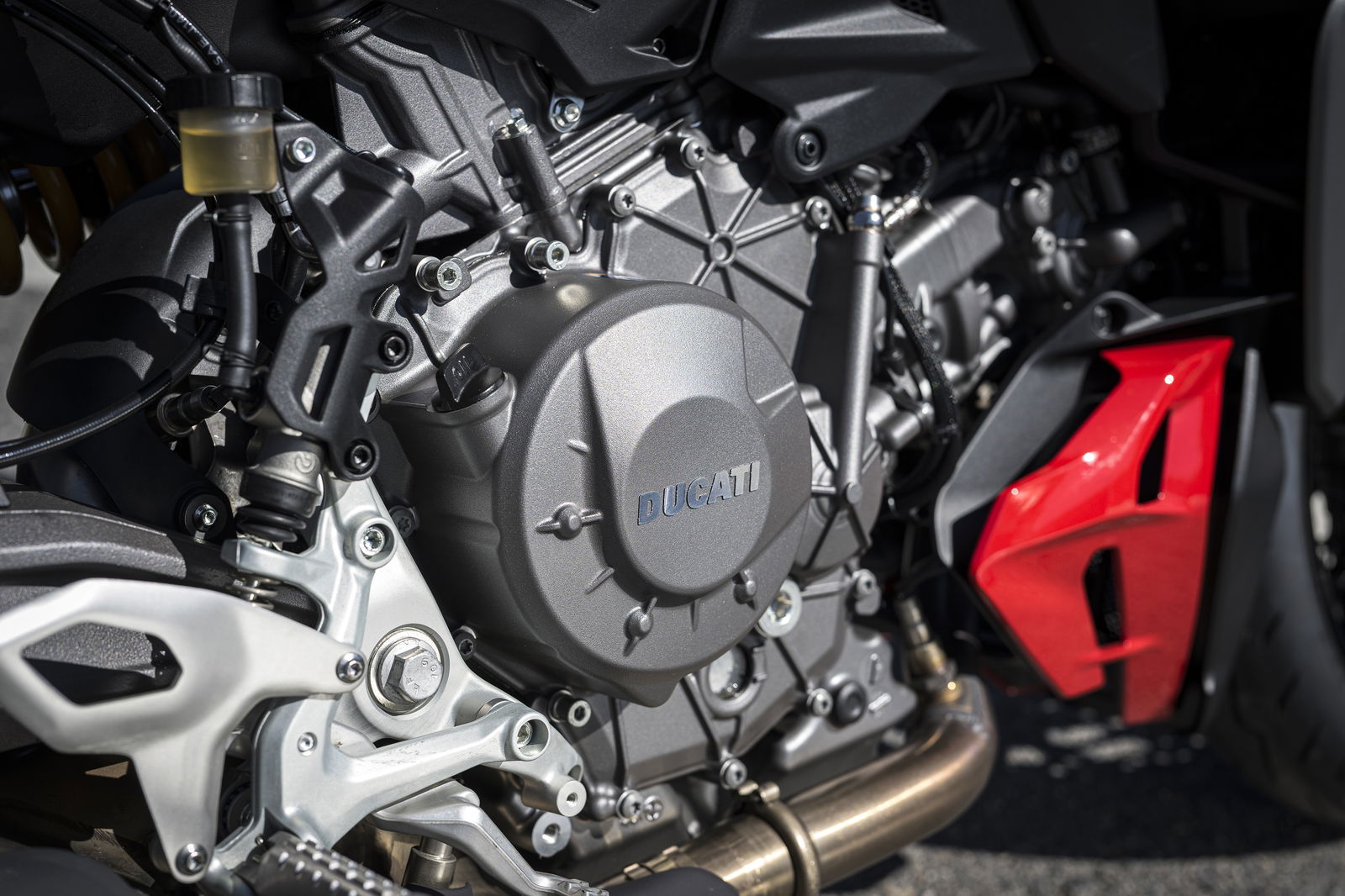
The Streetfighter shares a lot of similarities to the Panigale, including that new V2 engine, and also has the same gearing and torque curve. I found on today’s ride that the engine is also extremely forgiving. We were following a guide so I had no idea of the route or the road features that lay ahead, which meant that there were occasions where I was in a gear too high for some corners that became a bit tighter than expected. Even so, the engine still pulled me round because of that low down torque and grunt throughout the mid-range of the revs, which is extremely reassuring on the road as it gave me the confidence to know that the bike could get me out of a sticky situation if I needed it.
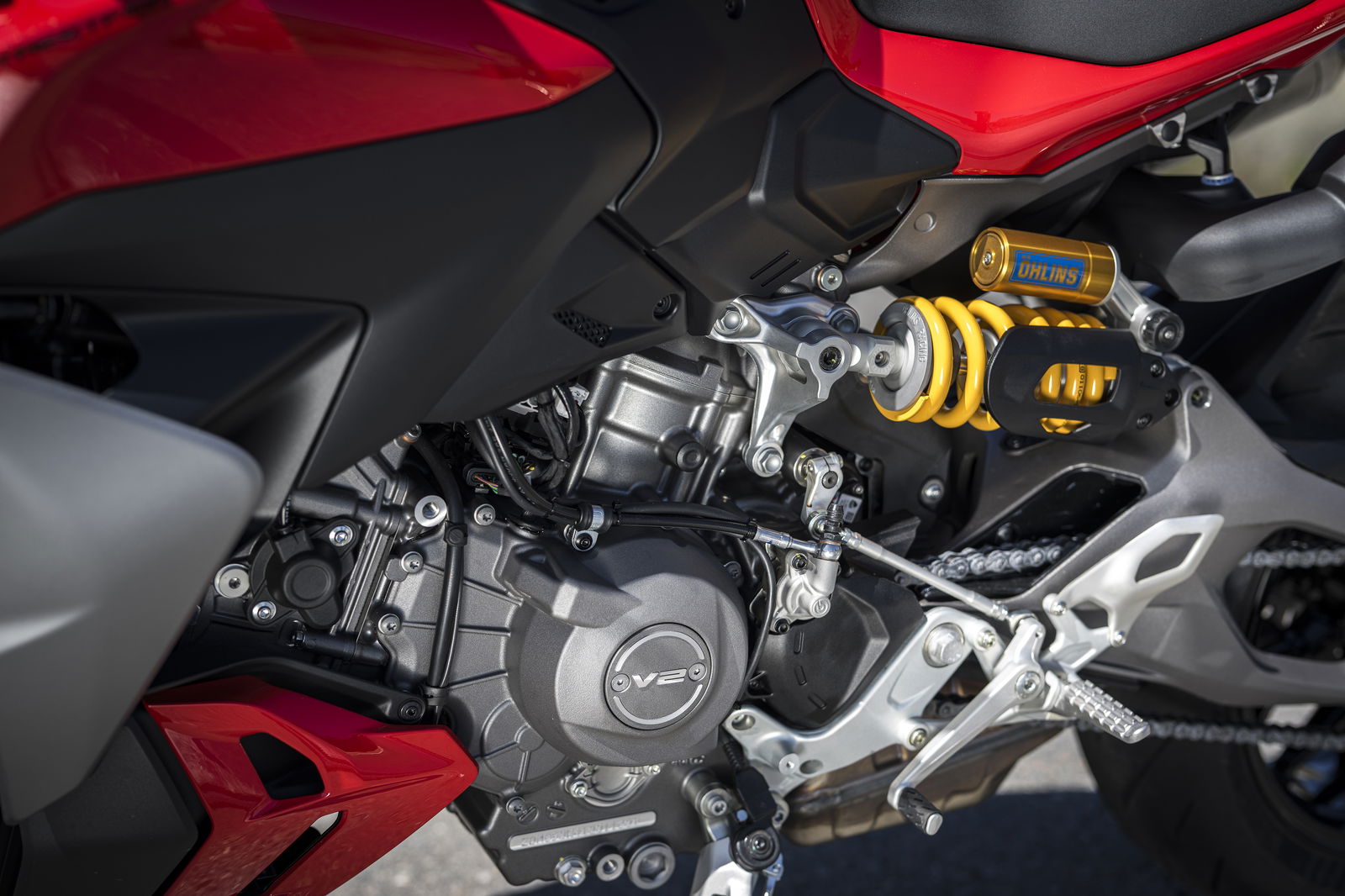
The Pirelli Diablo Rosso IV hoops are a top-spec, sporty road tyre, and they were mega on the endless hairpins that continued to be thrown at us like a dropped box of paper clips. It allowed the Brembo M50 brakes and Öhlins suspension to really shine on these curvy roads as we dived into apexes. On our ‘spirited’ ride, there were times when I pushed hard on the brakes, and the bike stayed super stable, the same composure I’d already experienced on the Panigale V2. The brakes are so strong and responsive, but with a progressive lever feel that seems perfectly at home on a road bike. The M50s have been on the market for a while now, but are a brilliant bit of kit. Paired with the fact that this bike is so light, I rarely found myself in trouble on the brakes.
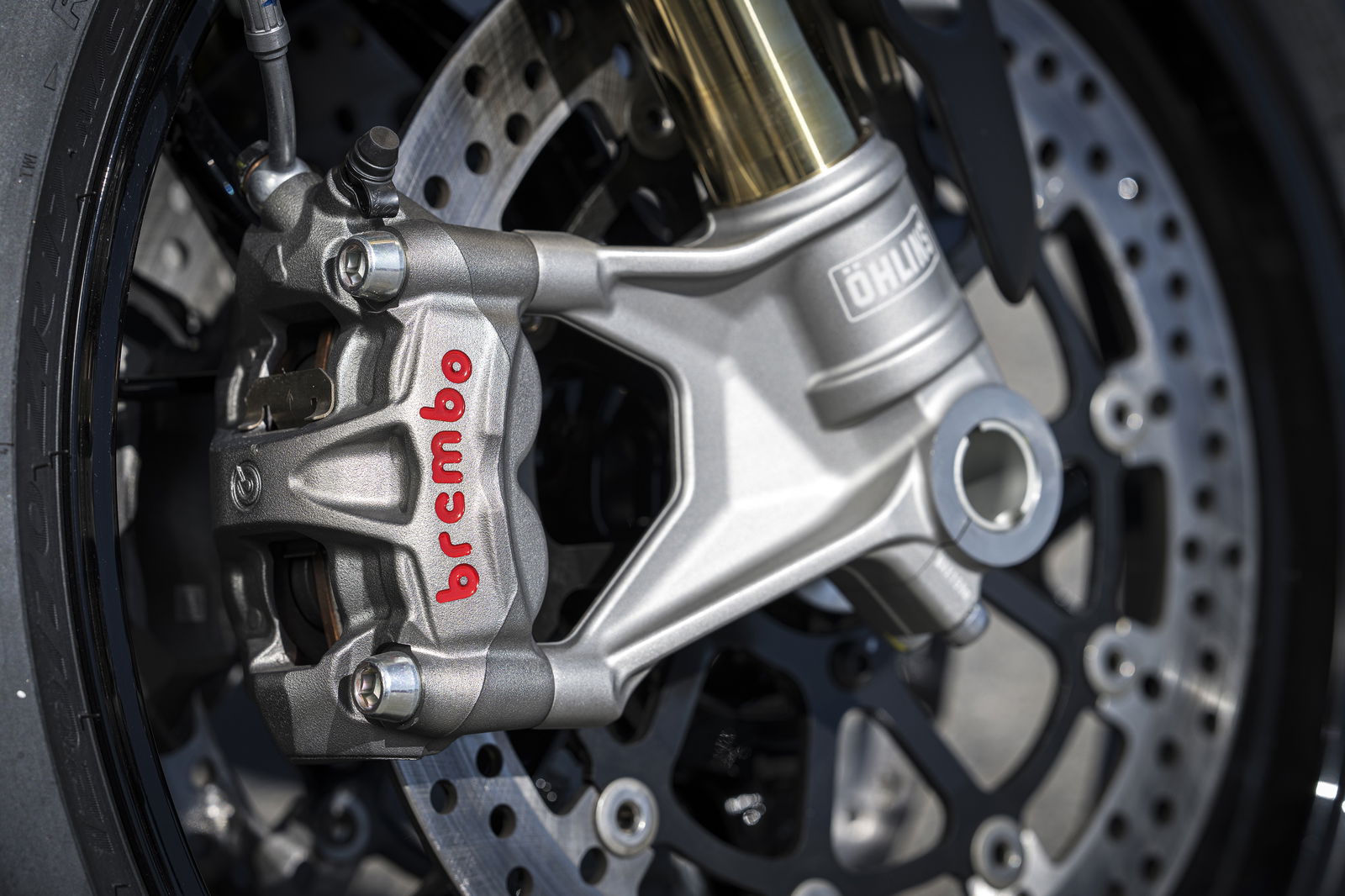
The Öhlins suspension is supported by Ducati’s Advanced Vehicle Control package, so I could adjust parameters on the move such as traction control, wheelie control and engine braking, all shown to you on the 5-inch TFT dash. Personally, I love the dash, I think it looks really slick and clear with different user interfaces that you can select depending on what features you favour and the context that you’re riding. I found it really easy to navigate the changeable settings in the system however, the buttons can be a bit fiddly to operate when you’re on the move as the petal joystick buttons are all quite squashed together. That said, it’s still a big upgrade on the system found on previous-generation Ducatis.
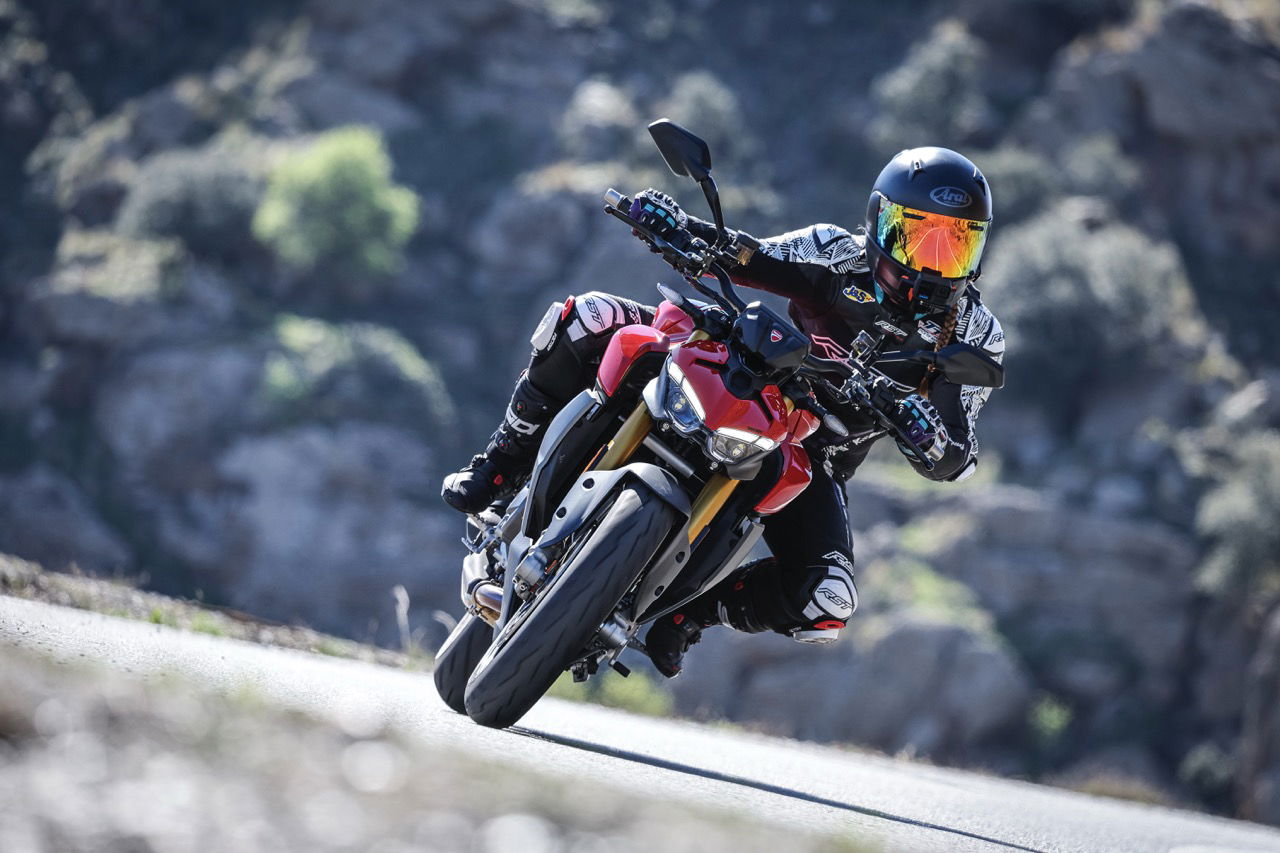
I tried three out of the four riding modes, starting with Road, then Sport, then Race (the fourth mode would be Wet which thankfully wasn’t required). The bike, on the whole, feels torquey and responsive in all modes and to be honest, I struggled to tell a massive difference between the three settings. Road mode is set at a medium power with more traction intervention and more engine braking, so it felt a little softer, but it’s ever so slight.
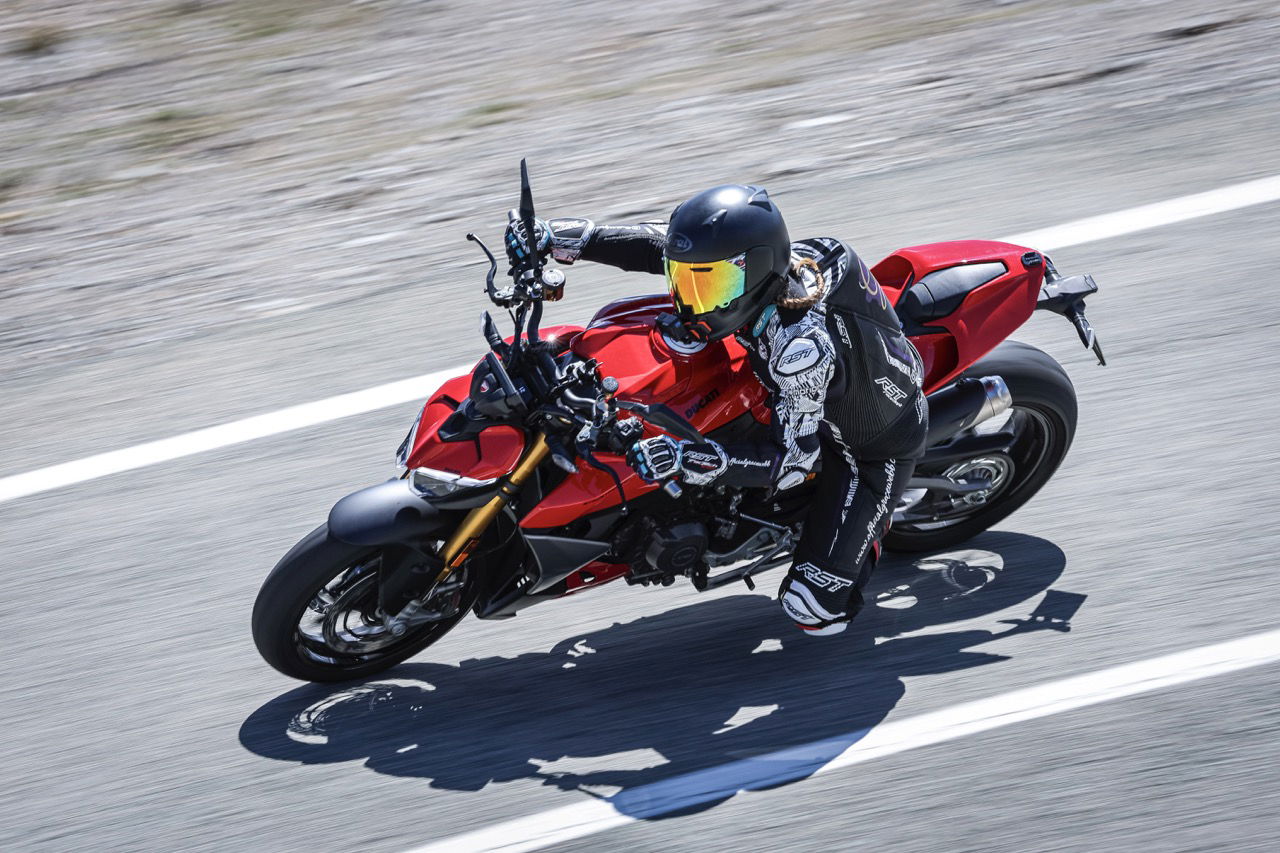
What I was really impressed with in Race mode was that, considering the suspension was in its dynamic setting (manually adjusted by Ducati before our ride), it still felt supple enough for the road, with a forgiving plushness over harder lumps and bumps. It wasn’t holding me back from enjoying fast, composed cornering, and neither was it giving me a kick in the backside if an unexpected crack in the road made an appearance. Matching that suspension with a bike that is so light is what makes the handling of the new Streetfighter so fantastic. It’s light and nimble, both on the roads but also when manoeuvring the bike in a tight parking space – it would be a doddle to live with and very easy to ride around town.
2025 Streetfighter V2 S verdict
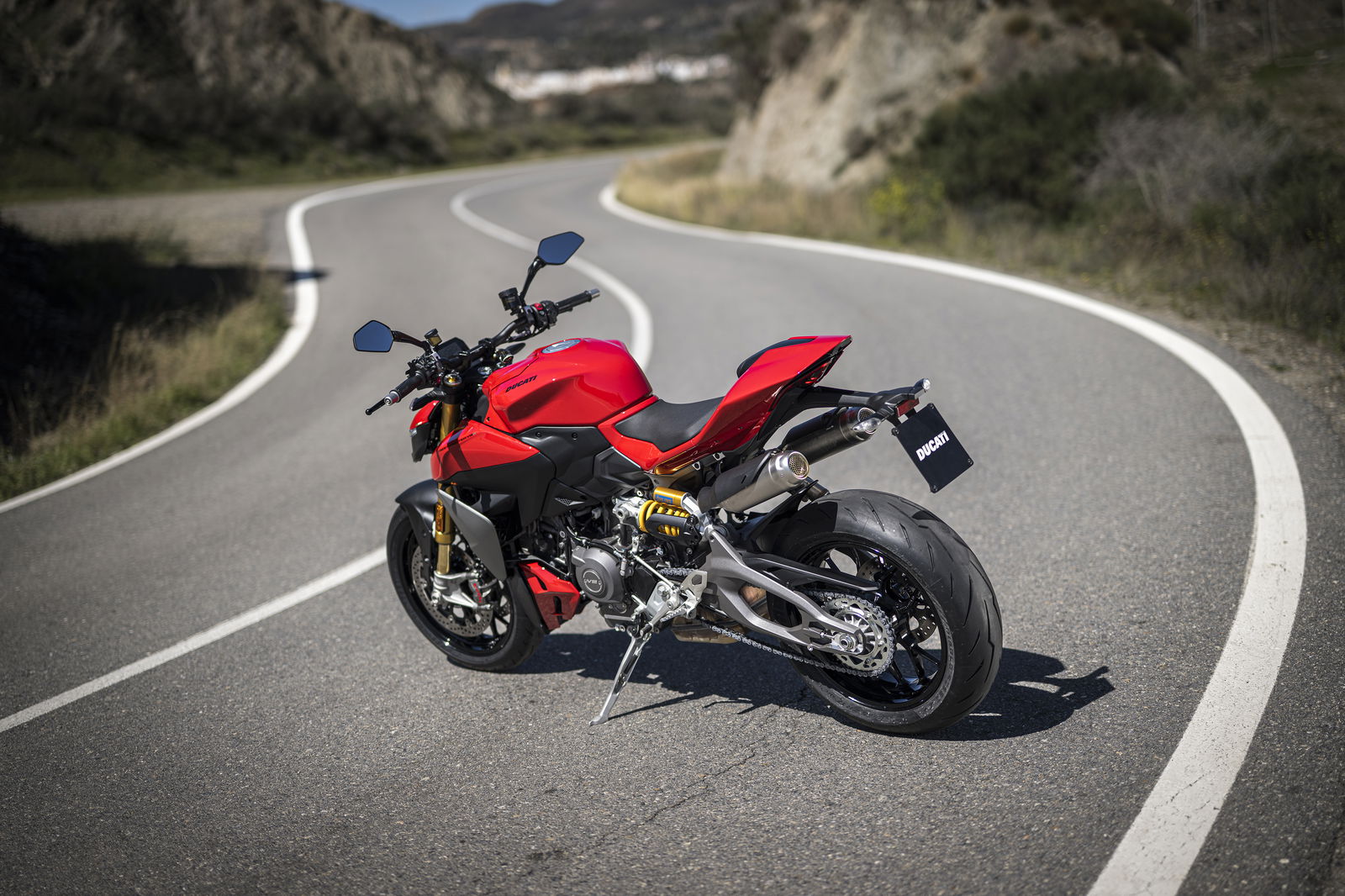
Ducati has started from scratch when designing this new engine, and it has resulted in a Streetfighter that is completely different to the previous model. Rather than charging in and replacing the old Superquadro 955cc V2 engine with more power and a slap in the face, Ducati has taken a moment to carefully consider what it is that customers want and the performance that’s actually needed from a bike to create an all-round package that is more scalpel-like, lighter and more useable but still with enough gutsy performance to make it useful on the road. I was impressed by the Panigale V2, but now we have the option of bringing many of those new features into a Streetfighter package - a package that saves you around £1,000.
So this road-focused distinction might just take your fancy more than the slightly pricier and racier Panigale. We’ve seen just how popular naked bikes have become over the years and although this is at the more premium end of the market, you are getting a brilliant package and a lot for your money in terms of the electronics and hardware. So to me, as we’ve tested it today, this is a wickedly sweet handling road bike but if you do the occasional track day, I don’t doubt that this would be a lot of fun to play around with, especially on tracks like Cadwell or Oulton Park, because it has all the equipment it needs to perform on the circuit too.
2025 Ducati Streetfighter V2 S spec
Engine | 90° V-twin, 890cc, four-valve |
Power | 118bhp @10,250rpm |
Torque | 69lb ft @ 8,250rpm |
Compression ratio | 13.1:1 |
Bore x stroke | 96 x 61.5mm |
Gearbox | Six-speed with Ducati (up/down) quickshifter |
Clutch | Wet w/slipper assist function |
Suspension (f) | Ohlins 43mm NIX fully adjustable fork |
Suspension (r) | Ohlins fully adjustable monoshock |
Fuel capacity | 15 litre |
Seat height | 838mm |
Weight | 175kg wet (no fuel) |

